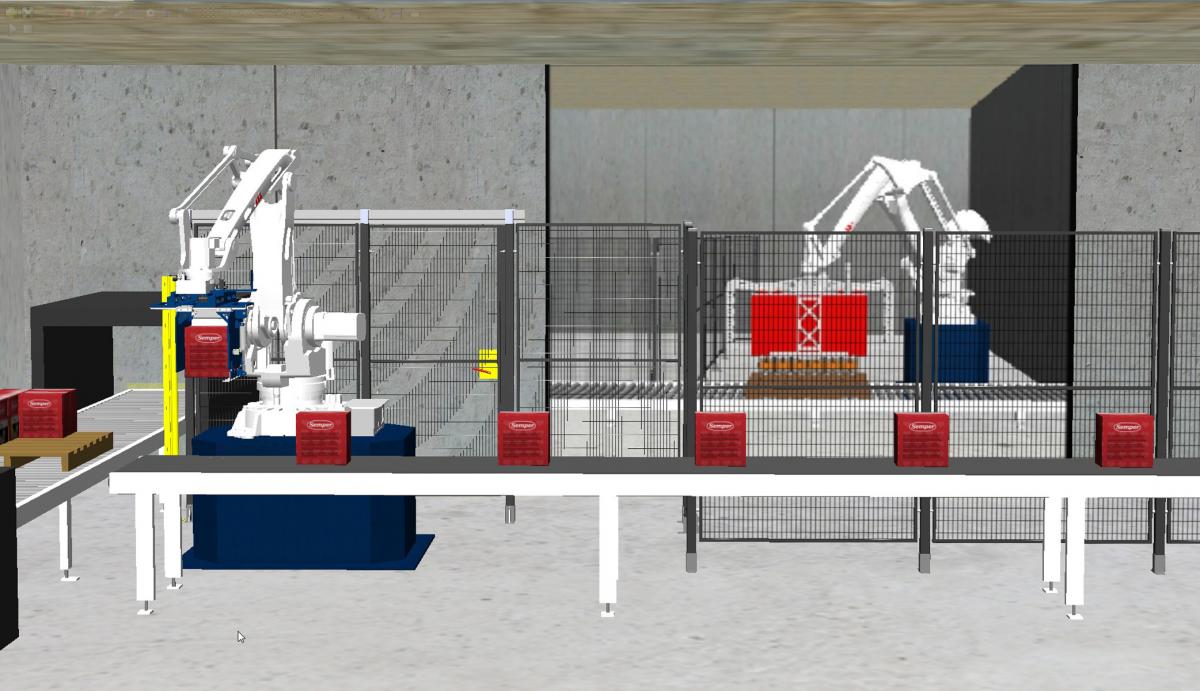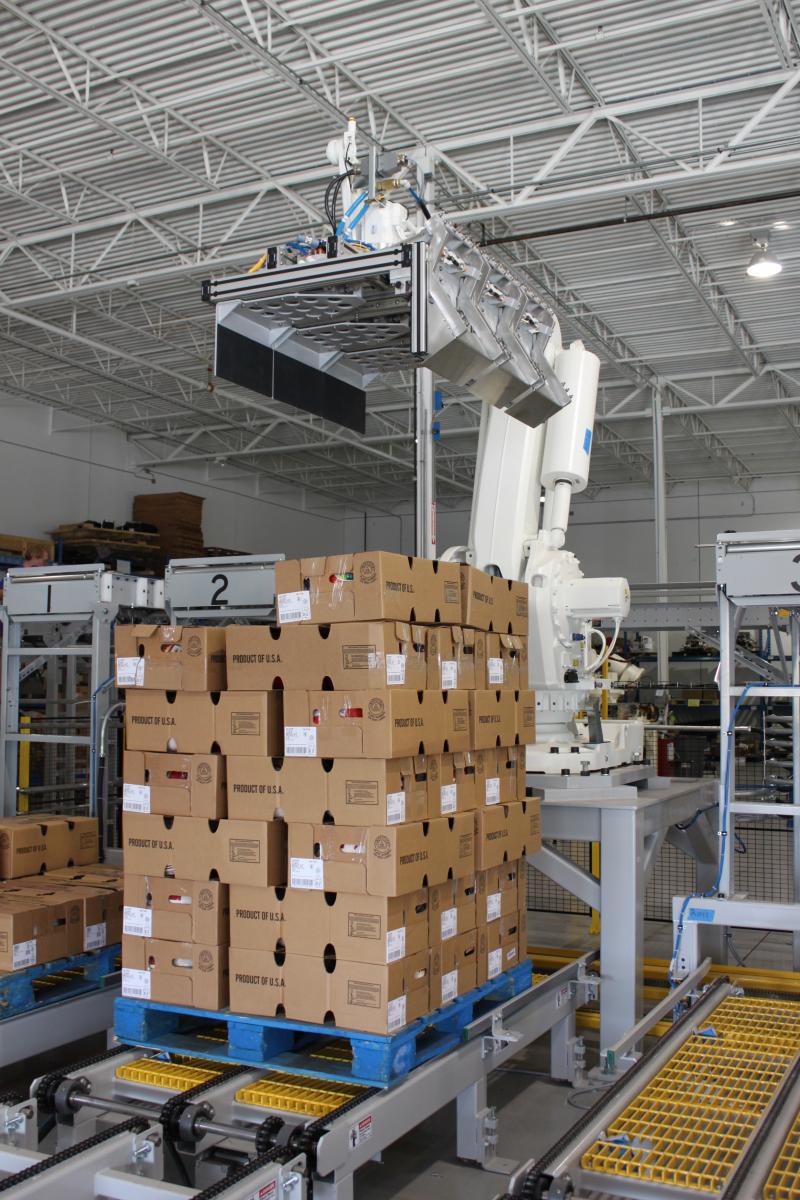AS THE final stage in the assembly line and production process before shipment, palletizing is the challenging task of stacking different types of packaging materials such as cartons, cases bags, drums and crates.
According to the study, Palletizing Systems Market: Global Industry Analysis and Opportunity Assessment 2016-2026 by Future Market Insights (FMI), technology innovation, the need to increase speed as well as enhance the quality of packaging lines, and the ever-shifting customer requirements are driving the expansion of the global palletizing systems market.
Robust demand from the food and beverage sector is expected to bolster growth in the global palletizing systems market during the forecast period. Palletizing robots, in particular, is seen as taking the biggest share in terms of revenue by 2026. The FMI also observes that F&B businesses are gradually introducing efficient and innovative ways to packaging and as a result further boosting demand for newer palletizing equipment.
Emerging trends
The use of robotics in food manufacturing has significantly changed product handling and continues to improve operational productivity, meet stringent government regulations on food safety and satisfy a range of customer demands.
“Two key trends are emerging which we believe will shape the way robots will be used in the future: Simplification and Digitalization,” says Roy Fraser, global product manager for Picking, Packing & Palletizing, ABB Robotics.
“Simplification will make installation, commissioning and programming of robots easier. This will be key for the packaging industry where ease-of-use, speed of deployment and short changeover times and faster packaging lines are all driving growth. Effective, plant management will be dependent on digitalization, or the ability to unlock the power of the Internet. Flexible automation systems will need to be interconnected to everything else. Food and beverage customers can benefit from the peace of mind derived from this kind of functionality. It drives up overall equipment excellence, assists with planned and predictive maintenance activities and ultimately reduces downtime.”
SPS Chauhan, director for Business Development, Asia and Middle East, Bastian Solutions, observes that increasing automation due to changing aspirations of the Generation Y workforce and collaborative robots will have an impact in the growth of palletizing robots.

SPS Chauhan, Director for Business Development, Asia and Middle East, Bastian Solutions
“We see that a lot of manual labor is being replaced from primary packaging, which is a great focus area for us. The Gen Y aspirations are changing and they do not want to work in a monotonous job like palletizing. And so, for case and crate palletizing, various robotic systems are being used to help with the labor issues related to Gen Y workers,” Mr Chauhan explains.
He adds, “Another trend we see is collaborative robots, i.e. robots working alongside humans. These robots do not require fencing and they are still 100 percent safe. Bastian Solutions is a leader in embracing new technologies and providing the best solutions to our clients and our constant R&D helps us keep pace with these developments.”
“The main challenge we see is the outlook of companies and workers regarding robots and automation. Companies think that robotic systems are expensive while workers think that with automation they will lose their jobs. To address these perceptions, we conduct training and awareness sessions and tell them that generally what gets automated are tedious tasks that reduce workers injury and fatigue.”
Palletizing robots for F&B sector
“Interest in robotic automation for palletizing is on the rise, particularly as it pertains to warehousing where crates and cases of food stuffs are typically palletized for retail orders. ABB offers a comprehensive range of four and six axes articulated robots for palletizing and pallet packing applications. Payloads in the 4 axes range go from 110 kg to 450 kg and in the 6 axes range from 150 kg to 800 kg which covers most requirements in the food and beverage sector,” says Mr Fraser.
“ABB’s portfolio of palletizing robots is well positioned to serve the food and beverage market thanks to their superior speed, accuracy and serviceability (mean time before failure or MTBF). Our end-users tell us that they appreciate the best in class speed of our IRB 460, a 110 kg 4 axes palletizer, because its deployment often decreases the number of units needed in multi-palletizer solutions.”
Their palletizing robot portfolio is complemented by a range of plug and play palletizing grippers, known as FlexGrippers (clamp, claw and vacuum), function packages (stand-alone palletizing cells) and offline programming software, RobotStudio® Palletizing PowerPac.

ABB's RobotStudio® Palletizing PowerPac
Mr Chauhan says, “Bastian Solutions offers a full end-of-line palletizing system for our clients in Asia right from high speed robotics packaging, carton palletizing, and crate palletizing, and integrated with conveyors and AGVs as required. What sets us apart from our competition is that we are a neutral material handling system integrator. We select the right sub-systems for our clients and offer the latest & best technologies to our clients.”

The Claw FlexGripper is a plug-and-play extension for ABB Robotics’ BB IRB 460 or IRB 660 palletizing robots. It can handle bag weights of up to 50kg.
Designs meet stringent food safety standards
In the United States, close attention to preventing food contamination has never been stricter with the enactment in 2011 of the FDA Food Safety Modernization Act. The hygienic designs in today’s robots make them an ideal for operating in a clean environment. Lesser human contact with food products contributes to the growing use of robots in food handling.
“ABB recognizes the increasing awareness of food safety and has a long reputation for working with the food and beverage sector to provide products and solutions that meet regulatory requirements,” says Mr Fraser. “To this end, ABB has close links with over 70 leading universities and has established relationships with consultants such as the European Hygienic Engineering & Design Group (EHEDG), amongst others, with whom we have worked on such topics as food grade oil and hygienic design.”
Mr Chauhan adds, “Definitely this itself is one of the reasons why more and more companies are opting for robotics. We offer clean room robots as well as our systems comply with various safety and food norms.”

In this photo, Bastian Robotics’ palletizing robot moves boxes filled with canned goods
Innovating with the times
Mr Fraser notes that the industry requirements have changed dramatically since ABB installed its first palletizing robot. “Processing and packaging lines now operate at higher speeds allowing greater throughput which means palletizers have to be able to move quicker and stack greater volumes. ABB has expanded its range of robotic palletizers to meet these industry essentials incorporating high speed, lower payload options such as the IRB 460 which easily keeps pace with the quickest bag filling machines available today and is used extensively in sack palletizing as well as the more traditional case and crate through to the IRB 760 heavy duty palletizer which is ideally suited for full layer palletizing.”
He says, “In the midrange we have two variants of the IRB 660 robot which is the most popular product with many companies adopting it as their palletizing standard. All these robots are complemented by a full range of ABB grippers developed to meet most of the palletizing needs and industry leading software packages which facilitate off line programming and simulation allowing greater flexibility and faster introduction of new products as well as the accepted rapid changeover from one product to another.”

With payload of 450 kilograms and a reach of 3.2 meters, this robot from ABB features high wrist inertia that allows fast rotation of heavier and larger products. It is suited for palletizing beverages
For many years, palletizing has been a mainstay of ABB’s food and beverage business. “It was the first area in this segment where robotic automation was implemented, and the success has contributed not only to ABB’s overall growth but has led to the acceptance of robotic automation in other processing and packaging areas. Advances in software and control technologies have moved palletizing forward to more complex and innovative systems with ease of programming, off line simulation and rapid installation to the fore,” Mr Fraser says.
Bastian Solutions offers ready-made palletizing cells to its customers. “It’s very fast to implement and clients can see the advantages within few months. We also offer an integrated robot on an AGV which can do multiple jobs in parallel,” says Mr Chauhan. “We have long believed in robotics. Hence we have a separate business unit known as Bastian Robotics that offer a full line of robotic systems.” – JONEL GUITTAP
Air Jordan VII 7 Shoes













